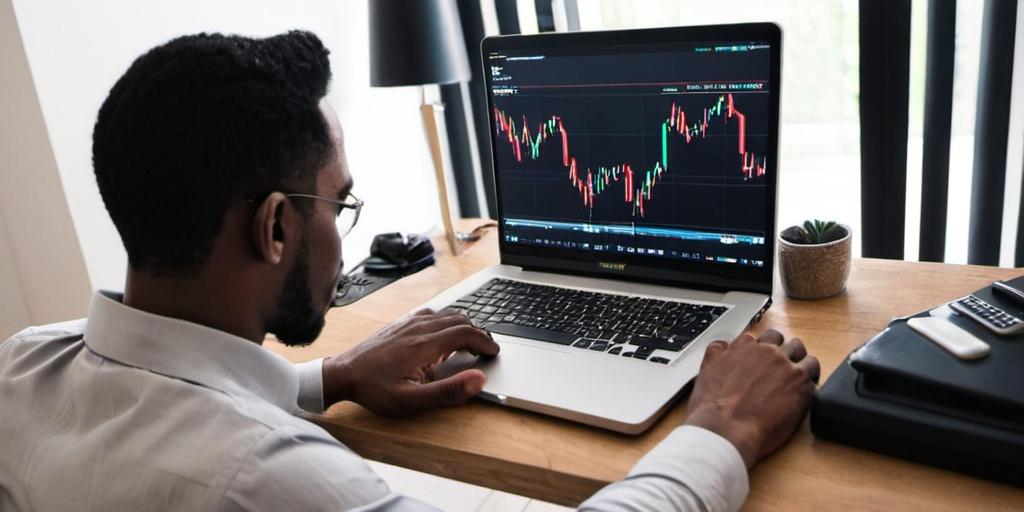Forex brokers serve as intermediaries between retail or institutional traders and the global foreign exchange market. They offer platforms, tools, and access to liquidity that allow clients to speculate on currency pairs such as EUR/USD, GBP/JPY, or USD/ZAR. Most individual traders cannot directly access the interbank market, which consists of large banks and financial institutions trading high volumes. Forex brokers bridge this gap, either by facilitating direct market access or by internalising trades within their own systems.
Understanding the different types of forex brokers and how they operate is essential for selecting one that fits your trading needs. Execution model, regulatory status, pricing, and platform quality all impact trade performance and long-term profitability.

Broker Models
The structure of a forex broker affects everything from order execution to transaction cost. Most brokers fall under one of several models.
Dealing desk brokers, also known as market makers, take the opposite side of client trades. They quote bid and ask prices internally and may profit when the trader loses. This model provides fixed spreads and guaranteed liquidity but introduces a conflict of interest.
STP brokers (Straight Through Processing) send client orders directly to external liquidity providers without internal dealing. Pricing is derived from the market, and spreads are usually variable. STP brokers act as a conduit, not a counterparty.
ECN brokers (Electronic Communication Network) aggregate orders and match them within a network of liquidity providers, including other traders, banks, and hedge funds. They offer access to deep liquidity and transparent pricing, with execution based on real-time order books.
DMA brokers (Direct Market Access) give traders the ability to place orders directly onto the books of external exchanges or liquidity pools. This offers the highest level of market transparency and control but is typically used by institutional or high-volume traders.
Some brokers operate hybrid models, offering both dealing desk and non-dealing desk execution depending on account type or trade size. It is not always clear from a broker’s marketing which model is used, so reading execution policy documents and client agreements is advised.
Regulation and Oversight
Forex brokers are regulated by national authorities to ensure financial stability, protect client funds, and enforce fair trading practices. The quality of regulation varies between jurisdictions. Reputable regulators include the UK’s Financial Conduct Authority (FCA), the Australian Securities and Investments Commission (ASIC), the U.S. Commodity Futures Trading Commission (CFTC), and the Cyprus Securities and Exchange Commission (CySEC) under the EU’s MiFID II framework.
A regulated broker is typically required to segregate client funds from company assets, maintain minimum capital, and undergo audits. Regulation also governs leverage limits, dispute resolution procedures, and the disclosure of risk. Brokers operating without oversight are more likely to delay withdrawals, misrepresent pricing, or engage in practices that harm traders. You can find a good regulated broker by visiting BrokerListings.
Trading Platforms and Tools
The trading platform is the interface between the broker and the client. Common platforms include MetaTrader 4 (MT4), MetaTrader 5 (MT5), cTrader, and proprietary systems. A reliable platform should offer live quotes, order execution, charting tools, and access to historical data. Features such as one-click trading, economic calendars, and automated strategy integration may also be important, depending on your trading style.
Some brokers offer APIs for algorithmic trading, while others focus on user-friendly mobile apps for casual users. Platform stability, execution speed, and customisation options are critical for those trading actively or using time-sensitive strategies.
Costs and Trading Conditions
Forex brokers earn revenue through spreads, commissions, or a combination of both. Spread-only brokers include their markup in the bid-ask difference. Commission-based brokers offer raw spreads with a separate per-trade fee. The actual cost of trading depends on both the fee structure and the execution quality.
Traders must also account for overnight financing charges (swap fees), inactivity fees, withdrawal charges, and other administrative costs. Not all brokers disclose these clearly, and they can accumulate over time, especially for traders holding positions for more than one session.
Leverage availability also differs. Regulated brokers in Europe and Australia cap retail leverage at 1:30 for major pairs, while offshore brokers may offer up to 1:1000. While higher leverage increases potential returns, it also increases risk and should be approached with caution.
Choosing a Broker
The best broker depends on your trading style, capital, and risk appetite. Scalpers require tight spreads and fast execution, while long-term traders focus on platform reliability and fund safety. Beginners may prioritise customer support and educational materials. Institutional traders may need API access and low-latency order routing.
When choosing a broker, assess the following:
- Regulatory status
- Order execution policy
- Fee transparency
- Platform compatibility
- Deposit and withdrawal options
- Historical reputation and reviews
A demo account can also help evaluate execution conditions before committing real funds.
This article was last updated on: May 18, 2025
